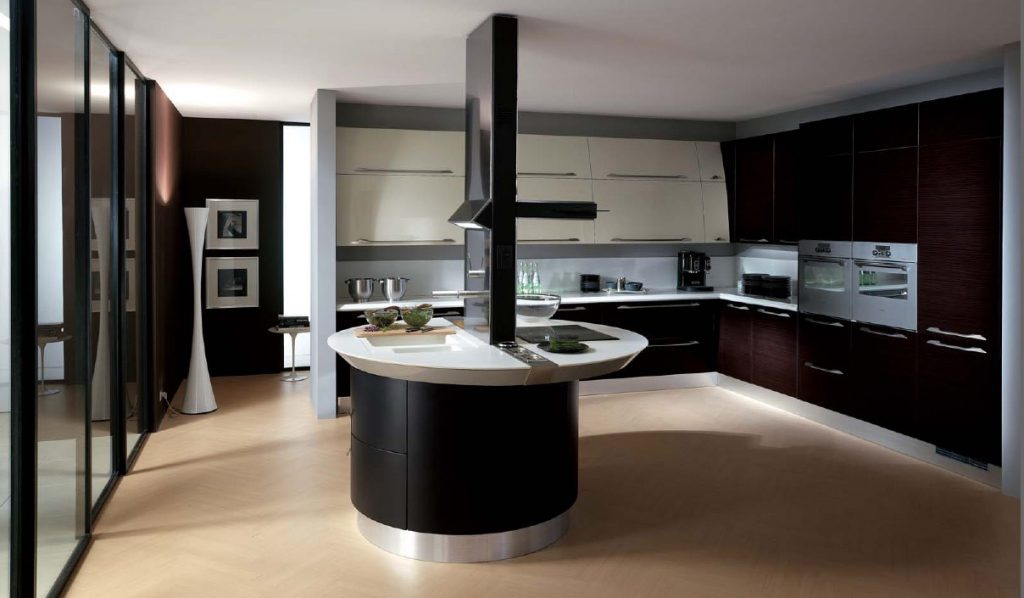
The kitchen is the heart of the home – the place we gather at parties. It is a stylish yet functional space and as such, you need the heating system in this room to be the same too.
Underfloor heating is the ideal solution for the kitchen in many ways. And here are our top tips for using underfloor heating is the most important room in the home.
1) Save space with underfloor heating in the kitchen
When it comes to heating your kitchen, underfloor heating makes an excellent space-saving alternative to bulky, inefficient space heaters and radiators.
Larger kitchens, especially when they’re open plan, can lose heat quickly and leave you feeling chilly when you’re preparing food. Heating the kitchen prevents damp and mould from forming, so forgoing radiators completely is not the answer. Underfloor heating does not cramp your style or cloud your interior design scheme. All the working parts are neatly hidden away, right beneath your feet.
2) Design the underfloor heating system layout around the kitchen cabinets
The great thing about underfloor heating is that it can be different in each and every room, giving you the optimum temperature and heat coverage you need.
In the kitchen, you will more than likely have fixed kitchen cabinets and appliances. In other words, the fridge/freezer unit will occupy a certain space, and the run of cupboards, sink and built-in appliances will also remain where they are.
You don’t need to extend the pipes of a wet underfloor heating system beneath the cupboards – this wastes energy and underfloor heating is about saving energy, using the least it can to keep the room or space warm.
But, if you have a patio or uber-fashionable bi-folding doors leading from the dining area to the garden, the space in front of the window can feel a little cooler in winter. Thus, the underfloor pipes can be laid closer together to produce more heat in that area of the room. OR, if you want to future proof your kitchen for a potential re-design, you could technically lay the underfloor heating system across the entire floor.
3) Choose a compatible flooring solution
It makes sense in terms of hygiene in the kitchen to opt for hard flooring. Spills and food stains, as well as grease and grime, stick to the carpet in the kitchen.
A hard floor is much easier and simpler to keep clean. And the great news is, hard flooring is a great solution that works well with underfloor heating.
But, there are some hard floors that work better with underfloor heating than others. And here’s why:
How underfloor heating works
To understand how underfloor heating works and why it is efficient, you need to understand the type of heat it is.
Underfloor heating is a radiated heat which means it heats the floor throughout the kitchen or dining space. The top layer of flooring needs to be a good conductor of heat but it also needs to retain the heat as much as possible.
By staying warm, the room remains warmer and thus, the heating system doesn’t need to consume as much energy to keep the kitchen warm.
Some materials are better at conducting and retaining heat as possible:
- Polished concrete floor – top of the list is a polished concrete floor with additives that grab heat and hold on to it for as long as possible. Polished and coated, it is non-slip perfect for the kitchen, and resistant to stains. It is also easy and quick to keep clean.
- Tiles – some tiles are great for grabbing heat and stay nice and warm for a long time. Again, resistant to spills and stains, tiles are easy to keep clean and ideal for a kitchen floor with underfloor heating. Choose the non-slip version of tiles.
- Flags and stones – for the ‘natural look’, some people opt for stones and/or flags, both good conductors of heat.
4) Perfect for fitting in one room
Underfloor heating is installation project that usually forms part of a bigger renovation project. However, many homeowners are concerned it will be a step too far, with costs spiralling out of control. And they have read horror stories of wet underfloor heating systems necessitating digging down into the floor…
But this is not the case with the ultra-low profile single zone underfloor heating kit, the affordable way of installing underfloor heating in one room.
5) Choose a great supplier
As a supplier of underfloor heating kits, single and multi-zone, we understand the smaller details that can have a significant impact on how the system is installed and operated at its most efficient.
To find out more and tap into our valuable bank of knowledge on everything to do with underfloor heating, drop us a line by emailing info@underfloorheatingtradesupplies.co.uk

1 comment. Leave new